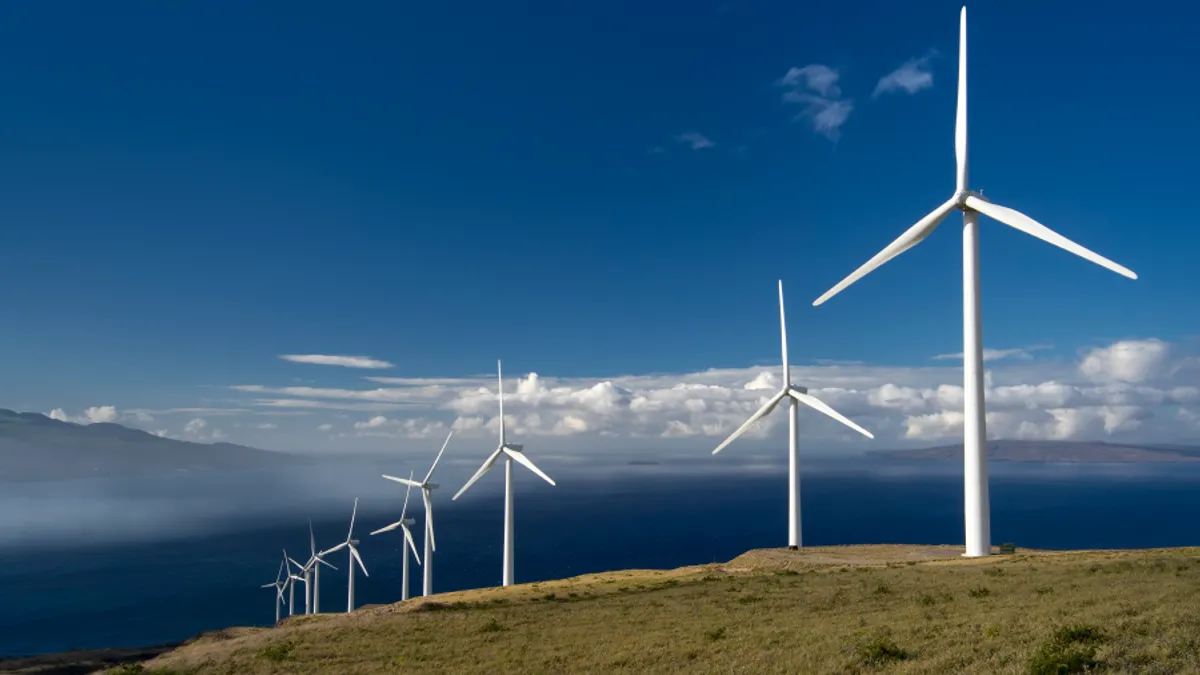Dive Brief:
- The price of wind power will continue to fall as the industry makes technological advancements, helping to keep it competitive as federal tax credits fall off, according to officials at NextEra Energy, which reported quarterly earnings on Tuesday.
- The company expects that wind power in 10 years will essentially cost what it does today while receiving the full federal production tax credit (PTC), thanks to taller towers, longer blades and better electronic systems, according to Armando Pimentel, president and CEO of NextEra Energy Resources.
- The company's unregulated subsidiary, NextEra Energy Resources, had its most successful renewables origination quarter, adding more than 2 GW of projects to its backlog, including 650 MW of additional wind repowering and 120 MW of battery storage projects.
Dive Insight:
The wind sector is just a couple of years from seeing the PTC start declining, leading to broad questions about whether rapid growth of the resource can continue. But NextEra officials see little reason for concern as technological advances mature alongside a diminishing tax credit.
Pimentel told analysts during the company's earnings call Tuesday that the outlook for new wind energy remains strong even as the PTC is slated to begin phasing out.
Asked about the size of the U.S. wind market when the federal subsidy rolls off, Pimentel said, "We think that by the mid part of the next decade that the pricing of wind is going to be pretty much on par to where we see it today with a 100% PTC."
The PTC begins to phase out in 2021, declining to 80%, then 60% in 2022, and so on. But considering improvements the company is beginning to see with technology, "we absolutely believe that by mid part of the next decade, you're going to have the costs around the same place that you have it today," Pimentel said.
"We think there's going to be a lot of wind that gets built over the next three to four years on top of the solar and storage that we are clearly seeing is coming to market," Pimentel said.
NextEra Energy Resources has also signed its first transaction in which a customer is combining wind and solar energy with battery storage, officials said.
John Ketchum, NextEra's executive vice president of finance and chief financial officer, said the deal "includes the largest combined solar and storage facility in the United States announced to-date." NextEra and Salt River Project unveiled the project in May.
Ketchum called it the next phase of renewables deployment, pairing "low cost wind and solar energy with a low cost battery storage solution to provide a product that can be dispatched with enough certainty to meet customer needs for a nearly firm generation resource."
On the regulated side of things, NextEra said it is also cotinuing to develop renewables and reported strong earnings for the third quarter at utility subsidiary Florida Power & Light.
FPL saw a Q3 2018 net income of $654 million, compared to $566 million in the prior-year quarter, "primarily driven by continued investment in the business," NextEra said In a statement. The utility is continuing to deploy major capital initiatives, including the construction of four 74.5-MW solar energy centers which are expected to save customers more than $40 million.
Construction of the 1,750 MW Okeechobee Clean Energy Center "remains on schedule and on budget," the utility said; the new gas-fired plant is expected to begin operation in mid-2019.
FPL said the 1,200-MW Dania Beach Clean Energy Center is being pushed through the development process, with plans for commercial operation in 2022.














